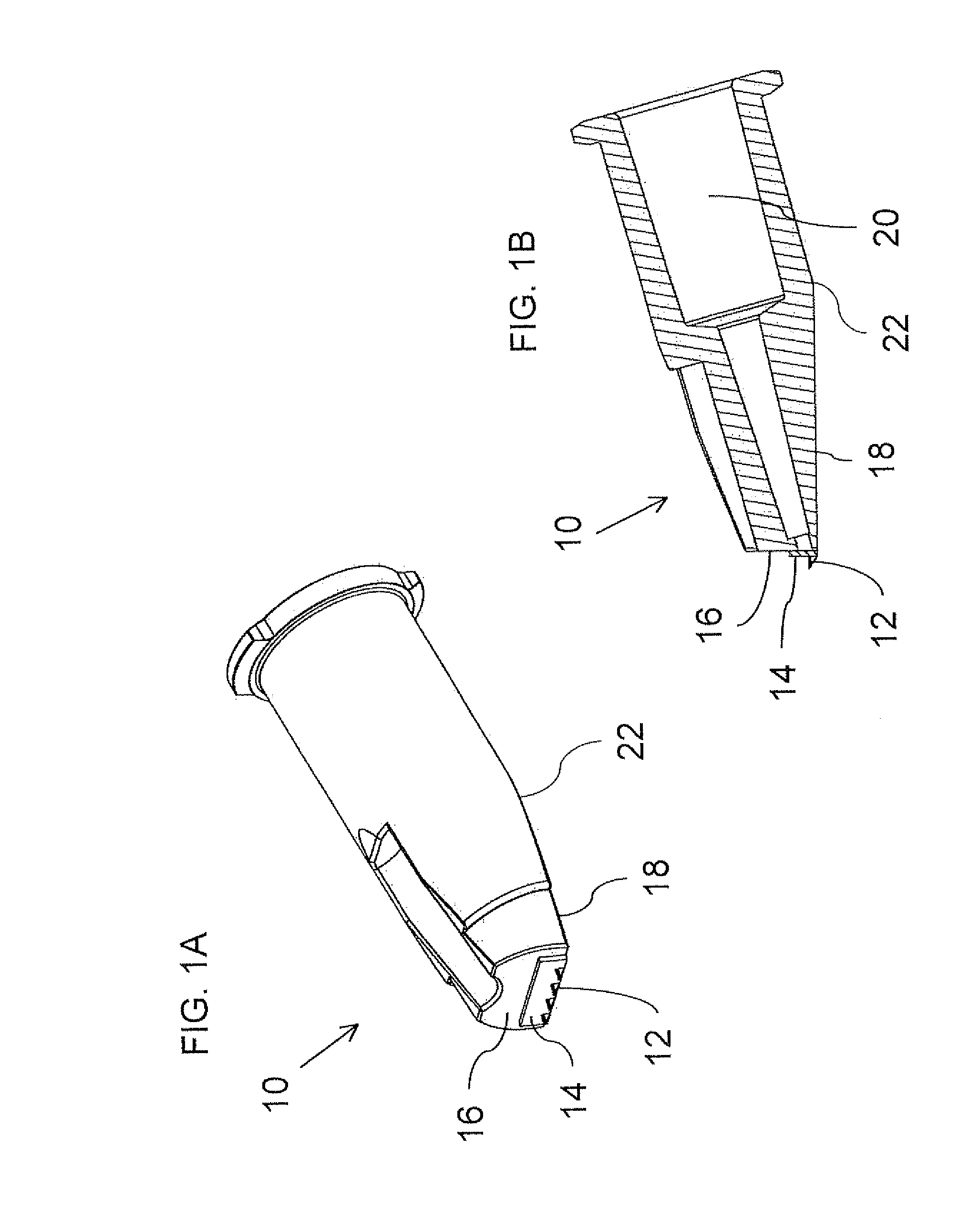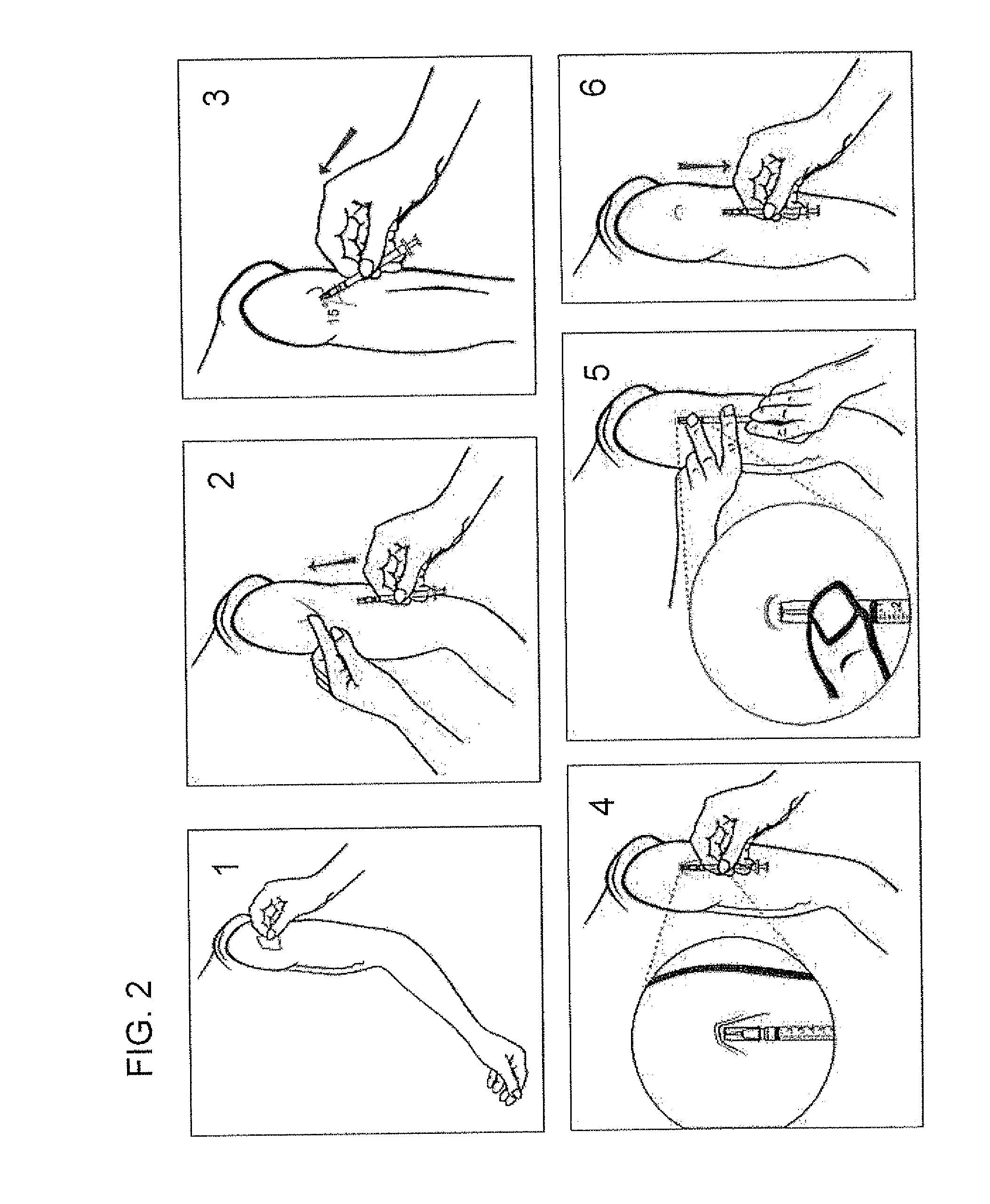Intradermal delivery of biological agents
a biological agent and intradermal technology, applied in the direction of intravenous devices, other medical devices, drug compositions, etc., can solve the problems of less immunogenic/diagnostic effect, reduced efficacy of injected substance, and difficult technique for intradermal injection using standard needles and syringes, so as to improve the efficacy of vaccination, minimal expertise, and significant biological benefits for patients
- Summary
- Abstract
- Description
- Claims
- Application Information
AI Technical Summary
Benefits of technology
Problems solved by technology
Method used
Image
Examples
example 1
Antibodies Production (Improved Immunogenicity)
[0077]The feasibility of the present method was proven effective in animal tests. Intradermal delivery using the microneedle device of the invention improves antibodies production. This example demonstrates the immunological benefits and the improvement in the kinetic profile of antibody production, using microneedle device and method of the present invention, in comparison to a regular ID delivery using a hypodermic needle.
Description
[0078]Various animals (e.g., Guinea pigs) are used in industry to produce primary and secondary antibodies for biological and clinical research, based on immunoassay methods (e.g. ELISA). In some of these animals the specific antigen is injected intradermally, in order to achieve a larger and / or faster immune response (antibodies production). After the primary immunization, several immunization boosters are given at different time intervals, and blood is collected. The antibodies production level is measur...
example 2
Immunological Benefits: Clinical Trial
[0082]A pilot clinical trial was conducted in order to evaluate the immunogenicity of intradermal injections of low-dose flu vaccines delivered with the microneedle device of the invention (“MicronJet”). The standard dose delivered intramuscularly and the CPMP criteria for the annual re-licensure of influenza vaccines (9) were used as a reference for the above objective. Commercially available flu vaccine (Fluzone® (Sanofi Pasteur) winter 2006-2007) was used for all injections.
[0083]Single center, single blinded, controlled study with three parallel groups.
Study Population:
[0084]The study was conducted with healthy adult subjects. A total of 180 volunteers were recruited.
Materials and Methods:
[0085]The study contained 3 arms. The sample size for each study arm was 60 subjects. This sample size is designed to meet annual licensing requirements for influenza vaccine in the EU. In the following analysis and in FIGS. 7-25, the following a...
PUM
| Property | Measurement | Unit |
|---|---|---|
| angle | aaaaa | aaaaa |
| angle | aaaaa | aaaaa |
| height | aaaaa | aaaaa |
Abstract
Description
Claims
Application Information
 Login to View More
Login to View More - R&D
- Intellectual Property
- Life Sciences
- Materials
- Tech Scout
- Unparalleled Data Quality
- Higher Quality Content
- 60% Fewer Hallucinations
Browse by: Latest US Patents, China's latest patents, Technical Efficacy Thesaurus, Application Domain, Technology Topic, Popular Technical Reports.
© 2025 PatSnap. All rights reserved.Legal|Privacy policy|Modern Slavery Act Transparency Statement|Sitemap|About US| Contact US: help@patsnap.com



